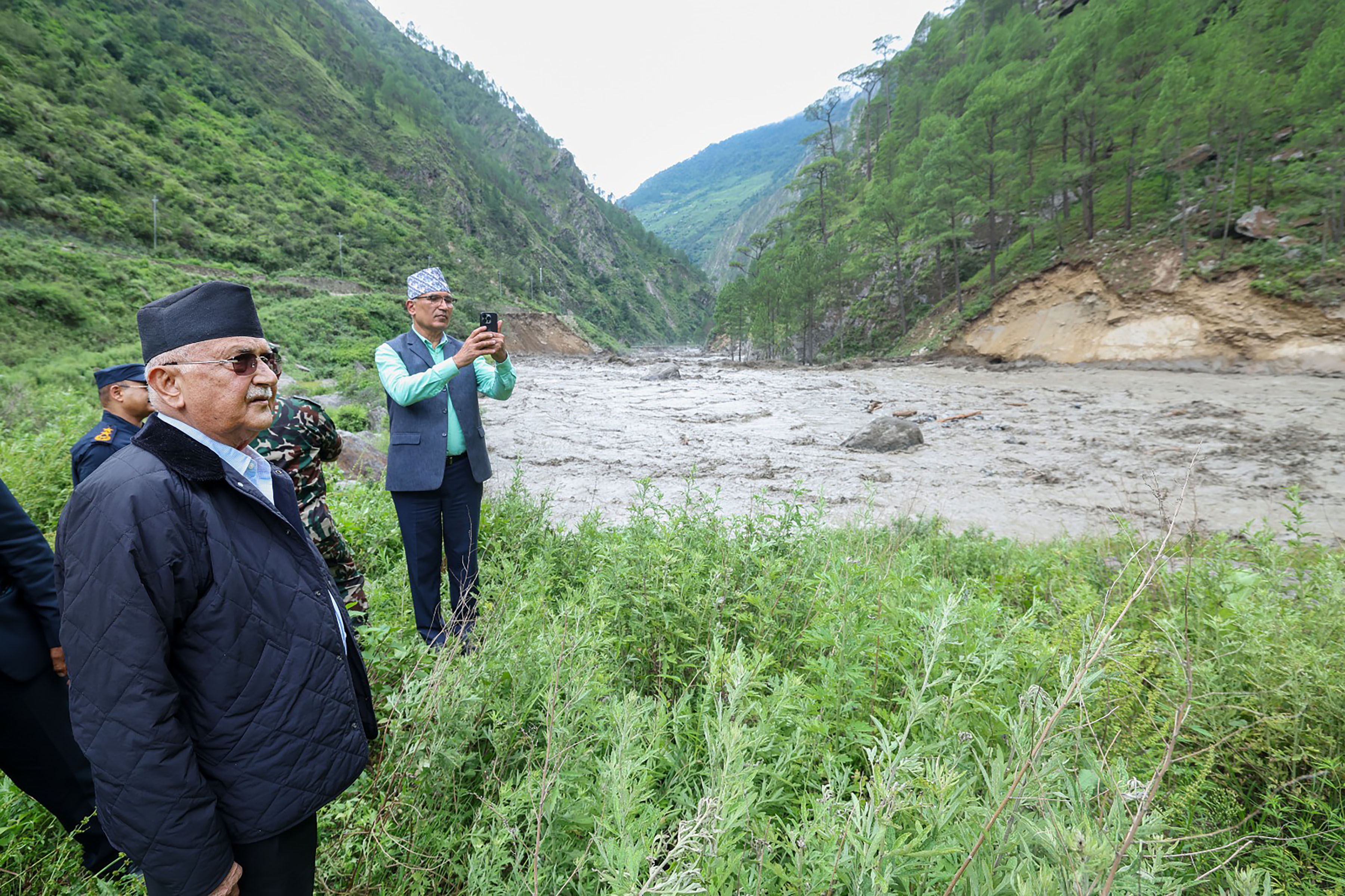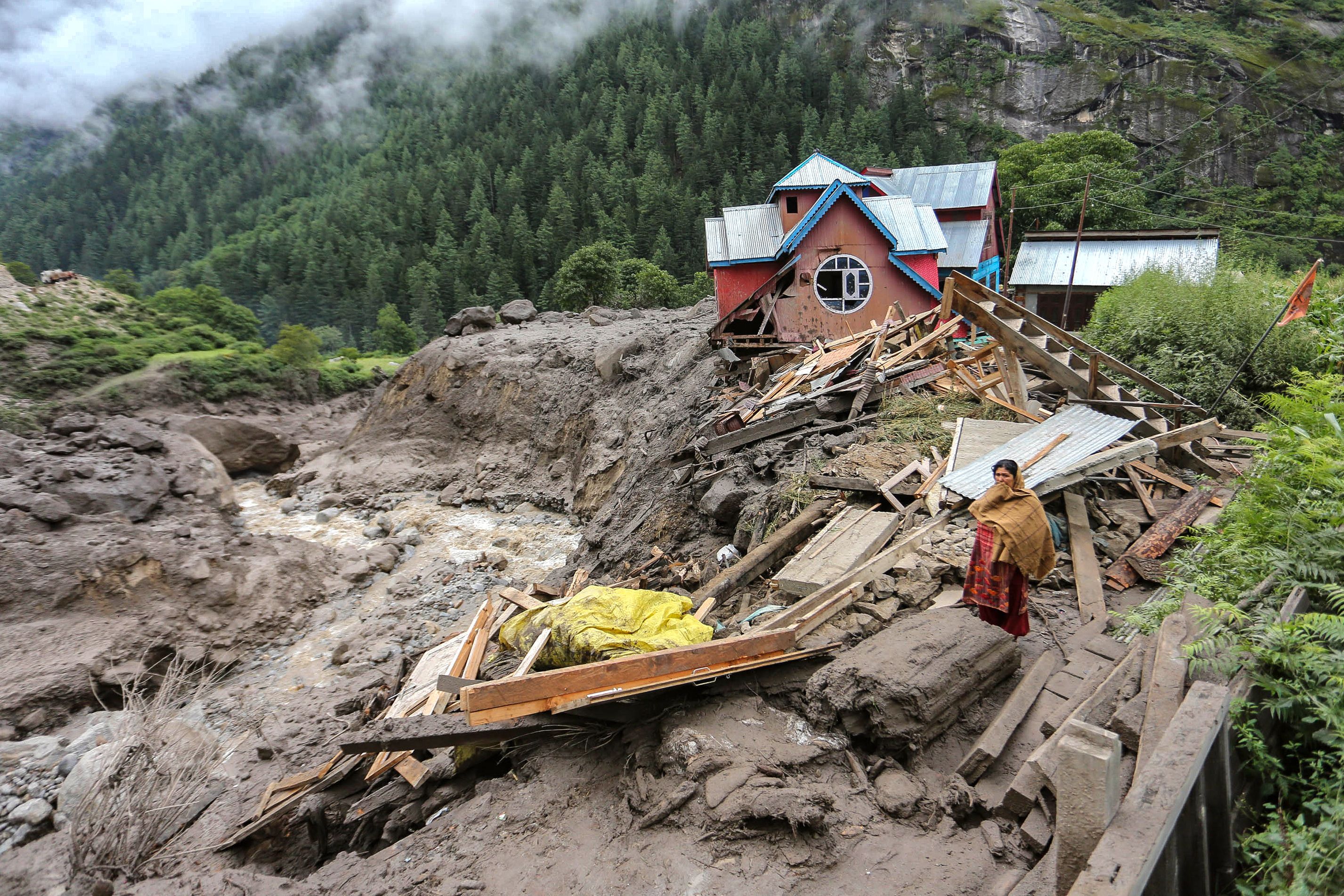The Bhote Koshi flash flood that struck in the early hours of Tuesday, leaving at least nine dead and 19 people missing, has captured national and international headlines. Rescue operations are underway along the Bhotekoshi, Trishuli, and Narayani rivers as authorities continue the search for the missing. The flood not only caused significant loss of life and property but also damaged key infrastructure, including a vital bridge at Rasuwagadhi that facilitated smooth cross-border movement of cargo and vehicles between Nepal and China. One particular incident that has resonated widely online is the dramatic rescue of a couple who had become stranded in the middle of the Trishuli River. Clinging to a tree as the floodwaters raged around them, they managed to survive until help arrived. In a daring operation, a Nepali Army helicopter flew over the swollen river, and a soldier jumped into the water to secure the couple using ropes. The couple was successfully rescued in a moment that has drawn comparisons to a tragic incident in Pakistan’s Swat River, where entire 18 members of a family were swept away during a picnic some two weeks ago, with no rescue efforts coming to their aid. Nepal’s security forces—particularly the Nepali Army, Armed Police Force (APF) and Nepal Police—have earned widespread praise for their swift and courageous response. Their actions demonstrate that, at the very least, Nepal’s security agencies are prepared for rescue operations during floods and landslides. However, such preparedness must be complemented by public awareness, robust early warning systems, and improved weather forecasting capabilities to prevent future tragedies.
Vehicle pulled out from Bhote Koshi River, two passengers still...

The flood also swept away the crucial bridge at the Rasuwagadhi border point, Nepal’s primary trading route with China, since the Tatopani point was largely closed following the 2015 earthquake. With this bridge and surrounding infrastructure destroyed, trade activities—especially imports vital for the upcoming Dashain festival—are set to come to a halt. This disruption is expected to affect Kathmandu and other hill regions most acutely. Given Chinese contractors' reputation for completing even large-scale infrastructure projects ahead of schedule, Nepali authorities should seek coordination and support from China for rebuilding the bridge. However, it is worth acknowledging that Rasuwagadhi may not hold the same strategic importance for China as it does for Nepal. As such, Nepal cannot afford to wait indefinitely for external assistance. It must take the initiative and begin reconstruction immediately, mobilising resources at both local and provincial levels. At the same time, the government should explore alternatives, including the full restoration of the Tatopani border point, which is currently only partially operational.
While floods are not new to Nepal’s hilly terrain, their frequency and intensity have increased alarmingly in recent years, making infrastructure development even more challenging. The precise cause of Tuesday’s flood remains uncertain. Experts have noted the absence of significant rainfall in the area, raising the possibility that it may have been triggered by the sudden outburst of a glacial lake. Preliminary assessments suggest that the Chinese side may not have suffered as much damage. This disparity highlights the need for enhanced real-time weather information sharing and coordination between Nepal and China, particularly given that many rivers originate in Chinese territory before flowing into Nepal. The extent of the destruction on the Nepali side also raises questions about the quality and oversight of infrastructure development. There are concerns that risk assessments and precautionary measures may have been overlooked during construction, possibly due to bureaucratic negligence or a top-down administrative approach that ignored ground realities. Therefore, beyond evaluating the damage, there must be a serious effort to identify and address structural and procedural shortcomings in the planning and implementation of infrastructure projects. We cannot prevent natural disasters, but we can at least reduce their impact through better preparedness, regional cooperation, and responsible governance. The recent disaster is both a warning and an opportunity to build back stronger, smarter and safer.



































